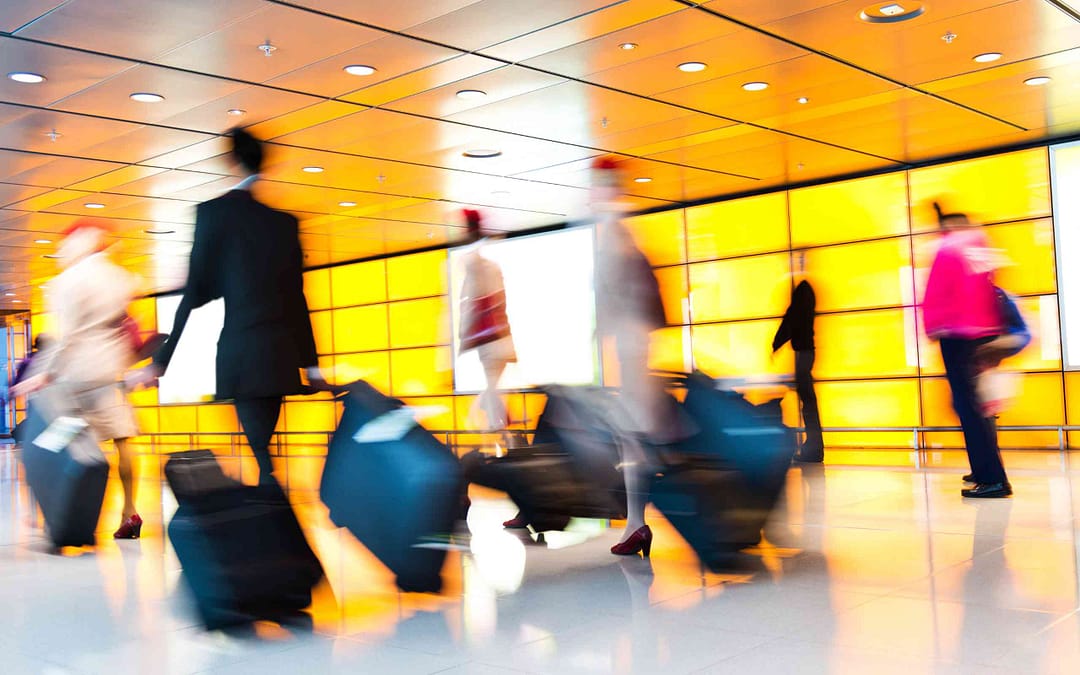Netaji Subhas Chandra Bose International Airport, known as CCU, serves as the main gateway to Kolkata, India. This bustling airport handles millions of passengers each year, making it one of the fastest-growing airports in the country. Located in West Bengal, CCU plays a key role in connecting eastern India to the rest of the world.
The airport has a rich history dating back to the early 1900s. It started as the Calcutta Aerodrome and grew into a major hub. Today, CCU boasts modern facilities and a new integrated terminal. The terminal’s design blends elements of Bengali culture with cutting-edge technology.
CCU offers many amenities for travellers. Passengers can find shops, restaurants, and lounges inside the airport. Ground transport options include taxis, buses, and a metro connection. The airport continues to grow and improve its services to meet the needs of Kolkata’s residents and visitors.
History and Development
Netaji Subhas Chandra Bose International Airport has a rich history spanning over a century. It evolved from a small airfield to a major international hub, playing a crucial role in India’s aviation sector.
British Colonial Beginnings
The airport’s roots trace back to the early 1900s when it was established as Calcutta Aerodrome. During British rule, it served as a strategic stopover on air routes connecting North America and Europe to Indochina and Australia.
In 1924, KLM began scheduled stops at Calcutta as part of their Amsterdam to Batavia route. The same year, a Royal Air Force aircraft landed at the airport, marking its military significance.
The aerodrome played a vital role during the Second World War, functioning as an important air base for Allied forces.
Modernisation and Expansion
After India gained independence, the airport underwent significant upgrades. In the 1950s, it welcomed the De Havilland Comet, the world’s first commercial jet airliner.
As passenger numbers grew, the airport saw continuous development. New terminals were built, and runways were extended to accommodate larger aircraft.
In 2013, a major milestone was reached with the opening of a new integrated terminal. This modern facility significantly increased the airport’s capacity and improved passenger experience.
Transition to Netaji Subhas Chandra Bose International Airport
Originally known as Dum Dum Airport, the facility was renamed to honour Netaji Subhas Chandra Bose, a prominent leader of the Indian independence movement.
The renaming reflected the airport’s importance to the region and its connection to India’s struggle for freedom. It symbolized the transition from a colonial-era airfield to a modern international airport serving a free India.
Today, spanning 1670 acres, it stands as the largest airport in eastern India. Its growth mirrors the development of Indian aviation and the country’s economic progress.
Airport Facilities and Terminals
Netaji Subhas Chandra Bose International Airport boasts modern facilities and a state-of-the-art integrated terminal. The airport caters to millions of passengers annually, offering a range of services and amenities to enhance the travel experience.
Check-In and Immigration
The airport features 128 check-in counters to handle passenger processing efficiently. These counters are equipped with advanced technology to speed up the check-in process.
For international travellers, the airport provides 78 immigration desks. This helps reduce waiting times and ensures smooth entry and exit procedures.
The airport uses modern baggage handling systems. It has 30 conveyor belts to deliver luggage quickly and securely.
Integrated Terminal and Airlines
The integrated Terminal 2 handles both domestic and international flights. This 233,000 square meter facility serves as the main hub for passenger operations.
Major airlines operating from the terminal include:
- Air India
- IndiGo
- SpiceJet
- Jet Airways
The terminal has 18 aerobridges for direct boarding. This allows for convenient access to aircraft for passengers of all mobility levels.
Cargo Terminal and Logistics
The airport has a dedicated cargo terminal. This facility handles the import and export of goods through air freight.
The cargo terminal is equipped with modern handling equipment. It ensures efficient processing of shipments.
Cold storage facilities are available for perishable goods. This maintains the quality of temperature-sensitive items during transit.
Passenger Services and Amenities
The airport offers a wide range of services to enhance passenger comfort. These include:
- Free Wi-Fi throughout the terminal
- Currency exchange counters
- Luggage wrapping services
- Golf cart assistance for passengers with reduced mobility
A shopping mall within the terminal provides retail therapy options. Passengers can browse through duty-free shops and local boutiques.
Several food and beverage outlets cater to diverse tastes. These range from quick snack kiosks to sit-down restaurants.
The airport also features prayer rooms and smoking lounges. These cater to specific passenger needs and preferences.
Air Connectivity and Flight Operations
Netaji Subhas Chandra Bose International Airport serves as a major hub for air travel in eastern India. It offers a wide range of domestic and international flights, connecting Kolkata to destinations across the globe.
Domestic and International Networks
CCU handles flights to numerous Indian cities, making it a crucial domestic hub. Major carriers like Air India, IndiGo, and SpiceJet operate frequent services.
The airport also boasts strong international connections. It links Kolkata to key cities in Southeast Asia and the Middle East. Emirates, Singapore Airlines, and Thai Airways are among the foreign carriers serving CCU.
Popular international routes include:
- Dubai
- Singapore
- Bangkok
- Kuala Lumpur
CCU’s strategic location makes it an important gateway for travellers heading to northeastern India and neighbouring countries.
Flight Departure and Arrival Procedures
CCU follows standard procedures for flight operations. Domestic to domestic transfers require a minimum layover of 45 minutes. For international connections, passengers need more time.
International arrivals go through immigration and customs checks. The airport has 78 immigration desks to handle incoming passengers efficiently.
For departures, CCU offers:
- 128 check-in counters
- 18 aerobridges
- 30 baggage conveyor belts
These facilities help streamline the boarding process and reduce wait times. The airport’s modern infrastructure supports smooth aircraft movements, contributing to India’s growing aviation industry.
Economic and Cultural Impact
Netaji Subhas Chandra Bose International Airport plays a crucial role in the economic growth and cultural exchange of Eastern India. It serves as a major aviation hub and a gateway for travellers to experience the rich heritage of the region.
Contribution to Regional Economy
The airport significantly boosts West Bengal’s economy. It handles large passenger traffic and cargo tonnage, creating jobs and driving business growth. In 2023, the airport processed over 500,000 tons of cargo and served 20 million passengers.
The aviation hub connects Eastern India to global markets. This link attracts foreign investment and promotes trade. Local industries, especially in Kolkata, benefit from improved accessibility.
Tourism also thrives due to the airport’s presence. Visitors can easily reach popular destinations like the Ganges River and cultural sites in the City of Joy.
Cultural Gateway to Eastern India
Netaji Subhas Chandra Bose International Airport showcases the region’s rich cultural heritage. The terminal buildings feature artwork inspired by Bengali art and literature.
Travellers encounter the amalgam culture of Eastern India upon arrival. The airport’s design reflects influences from the 19th-century Bengali elite and modern architectural styles.
The facility honours notable figures like Rabindranath Tagore through dedicated exhibits. These displays highlight the intellectual vitality of West Bengal and its contributions to Indian culture.
Cultural events and performances at the airport introduce visitors to local traditions. This exposure helps preserve and promote the unique identity of Eastern India to a global audience.
Frequently Asked Questions
Travelers often have questions about Kolkata Airport’s terminals, history, airlines, and operations. Here are answers to some common queries about this important Indian aviation hub.
What are the different terminals at the Kolkata Airport and how are they designated?
Kolkata Airport has two main terminals. Terminal 1 handles domestic flights, while Terminal 2 serves international flights. The airport uses a simple numbering system for easy navigation.
What is the historical name of the airport located in Kolkata?
The airport was originally known as Calcutta Aerodrome. It was founded in the early 1900s and has since undergone several name changes.
Which airlines consider the Kolkata Airport a major hub?
Several Indian airlines use Kolkata Airport as a key hub. These include Air India, IndiGo, and SpiceJet. The airport serves as an important connection point for flights across India and to international destinations.
How far apart are terminals 1 and 2 at the Kolkata Airport?
Terminals 1 and 2 at Kolkata Airport are located close to each other. They are connected by a short walkway, making transfers between domestic and international flights convenient for passengers.
Who is responsible for the operation and management of the Kolkata Airport?
The Airports Authority of India (AAI) operates and manages Kolkata Airport. AAI oversees the day-to-day operations, security, and development of the airport facilities.
What rank does Kolkata Airport hold in terms of passenger traffic and facilities?
Kolkata Airport is the sixth-busiest airport in India based on passenger traffic. It handled around 18 million passengers in 2022-23. The airport offers modern facilities and continues to expand to meet growing demand.





















